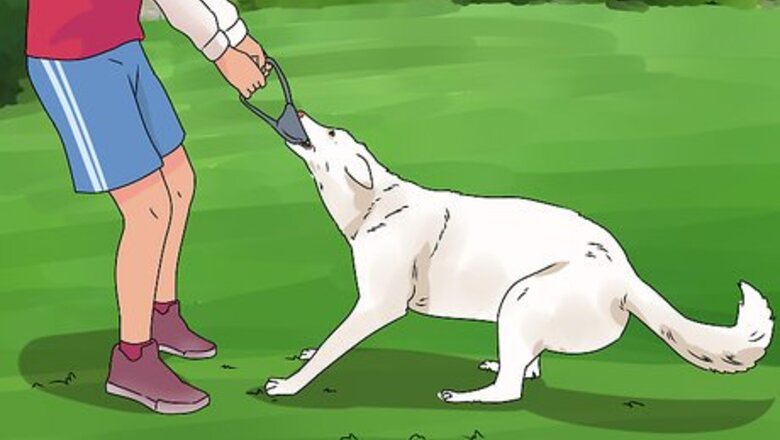
views
Building Muscle with Exercise
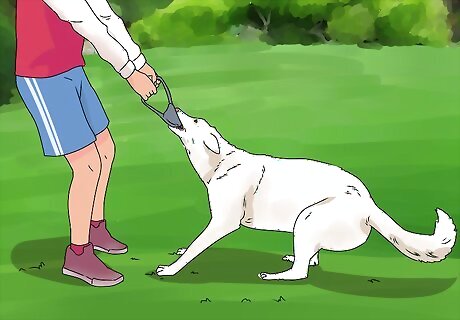
Do pulling activities to build muscle. If your dog likes to play tug-o-war or to pull heavy items around your yard, you can use that inclination to help build its muscles. By encouraging these types of pulling activities, you are forcing the dog to use their muscles in a way that is similar to weight training. If you want to do focused conditioning and training, you can even get a weight pulling harness made specifically for dogs. These harnesses are made to distribute the weight evenly over the dog’s body so that it doesn’t get injured. To encourage your dog to play tug-o-war even while you are not around, make a spring pole. This is a rope tied to a tree or other high, sturdy structure that has a toy tied to the end of it.
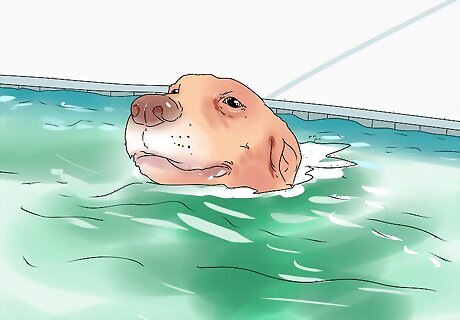
Give your dog opportunities to swim. Swimming is an excellent, non-weight bearing exercise for dogs that is both aerobic and muscle building. This makes it perfect for dogs with arthritis or sore joints, and these dogs benefit from extra muscle around their joints since it helps to support them. It also gives a better workout for the dog’s front legs than walking or running, so it’s great for building those muscles. For example, a 10-minute swim uses as much energy as an hour-long walk. Keep an eye on your dog while it is swimming. This is especially important if the dog is tired out, as there is a risk that it might have trouble keeping its head above the water.
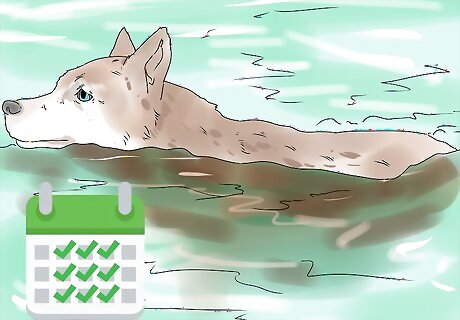
Do strength exercises 3 times a week. In order for your dog to gain muscle mass, it needs to have proper rest periods between workouts. Give your dog a day between highly exhausting activities, such as long swims, so that the muscles can recover and get ready for the next round of exercise. If you exercise your dog too much, you could exhaust it or cause damage to its muscles. Look for dog classes that where you can spend time exercising with your pup off-leash.Tip: On rest days your dog doesn’t need to just lay around. Continue to take it on walks and play with it, just don’t work it hard.
Increasing Muscle Mass with Diet
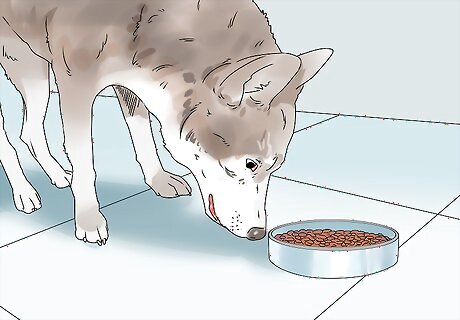
Feed your dog well-balanced food that has few filler ingredients. Talk to your vet about how to give your dog a healthy diet. Ask them what to food your dog, how much, and how often. Then, choose a food that meets the nutritional levels listed in the AAFCO Dog Food Nutrient Profiles. Your dog's nutritional needs can vary depending on a lot of factors, which is why it's so important to get personalized advice from your vet.
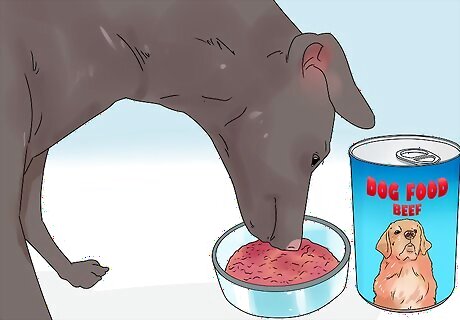
Give your dog a food that contains high-quality proteins. When picking out a dog food, make sure the animal proteins included are not all called “byproducts.” Look at the label of your food and ensure that the top three protein ingredients are whole proteins. For example, they should be labeled simply as poultry, beef, or another common protein source. Byproducts are typically the extra pieces off of animals that processors can't sell after an animal is butchered. Some byproducts are perfectly fine food for dogs, such as organs that people don't eat a lot of but are full of nutrients. However, you won't know exactly what your dog is getting from the label "byproduct" and the ingredient may not have the protein content that you want in your dog's food. Also focus on giving high-protein treats to your dog. You can purchase packaged treats from your local pet store or you can give simple treats of foods you have at home, such as small pieces of cooked chicken or beef. If your dog has a medical condition that makes eating a lot of protein a bad idea, consult with your veterinarian about what foods are best for it while you are trying to get it to put on muscle mass. For example, dogs with kidney or liver issues shouldn’t eat a lot of protein.Tip: High protein food can cause a dog to put on weight very quickly if that dog is not physically active. Your dog needs a lot of exercise to burn off the calories and to build its muscles. You should also avoid giving high protein food to your dog if it is elderly or has kidney problems.
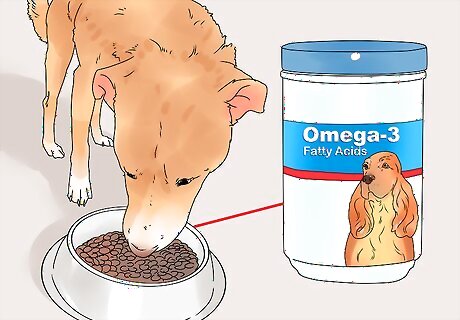
Increase the amount of fat your dog eats if it is getting a lot of exercise. Dogs need extra energy when they are doing a lot of activity, and fat is actually the best fuel for them to burn. Focus on giving your dog food that says it’s high in omega-3 fatty acids on its label. This type of fat causes less inflammation in a dog than other types of fats, such as omega-6 fatty acids. In addition, there are a variety of commercially produced high-fat treats available at most pet stores. You can give your dog treats of high-fat foods you have at home, such as peanut butter. Fat is better than giving them extra carbohydrates, which would require them to eat lots of extra food and which can cause joint problems and inflammation. Be aware that some dogs are more susceptible to pancreatitis, and high-fat foods can trigger this. Avoid giving high-fat foods to high-risk breeds, such as Boxer and Miniature Schnauzers, and to any dog that has had a previous episode of pancreatitis.

Don’t give your dog muscle building supplements made for humans. Dogs’ bodies process nutrients differently than other animals, including humans. This means that you shouldn’t give your dog collagen or other supplements that are made for muscles building in humans.
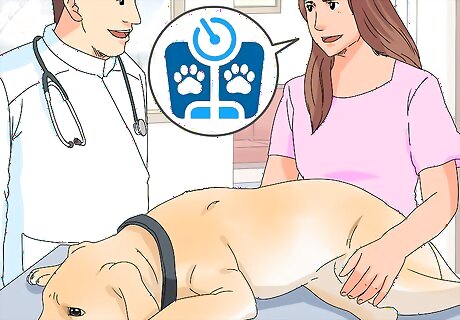
Consult your vet about changes you want to make to your dog’s diet. When trying to perfect your dog’s diet in order to increase the animals muscle mass, it’s important to consult a veterinarian before making any changes. They will be able to tell you whether the food you want to give will get the results you want and if it will fulfill your dog’s general nutritional needs at the same time. There are some veterinarians that specialize in animal nutrition. Consult with this type of vet if you have specific questions that your general vet can’t answer.
Building Muscle After a Period of Enforced Rest

Talk with your dog’s veterinarian before taking your dog off rest. Make sure to follow your veterinarian’s recommendations for a period of enforced rest. Do not take your dog off of rest until they tell you it is okay to do so. When you do take your dog off of rest, make sure to follow your veterinarian’s suggestions for how to ease your dog back into exercise.
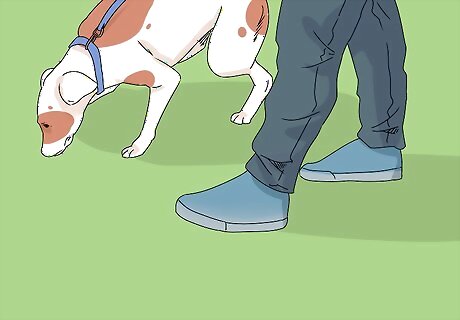
Start with a small amount of daily gentle exercise. If your dog recently had a period of enforced rest due to surgery or arthritis, it will need to ease back into exercise. Start by taking your dog on short walks around your neighborhood, such as a 5 minute walk 2 times daily. Encourage your dog to walk slowly and take breaks, such as by walking slowly yourself and stopping every few blocks or after a few minutes of walking. Pay attention to how your dog behaves during the walk. If it limps, pants, or seems tired or uncomfortable, you may want to end the walk.
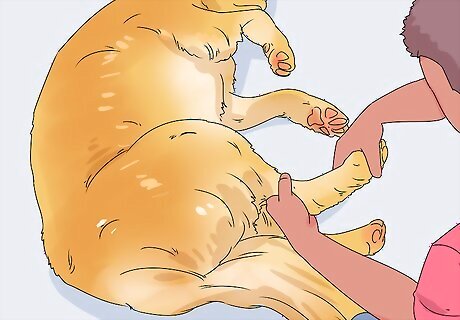
Warm up your dog at the beginning of each exercise session. Moving your dog’s limbs using passive range of motion exercises (PROM) is a great way to warm up your dog’s muscles and reduce the chances of injury during its exercise sessions. For example, with your dog laying on its side, slowly and gently bend and flex each of its joints starting at its toes and moving toward its hip and arm joints. Ask your dog's veterinarian what PROM exercises might be helpful for your dog.
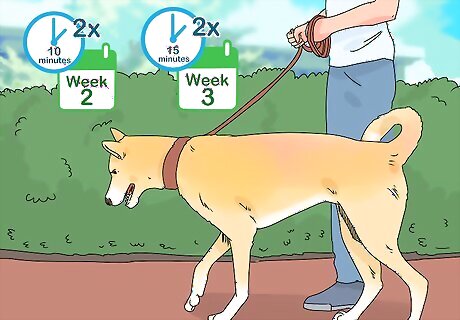
Increase the length of your dog’s walks gradually. Don’t allow your dog to jump straight from zero activity to 30 minutes or more of daily exercise. Start small and increase the daily total in 5 minute increments over a period of weeks. For example, if your dog starts walking for 5 minutes 2 times daily in week 1, then bump it up to 10 minutes twice daily in week 2, then 15 minutes twice daily in week 3. Make sure to ask your dog’s vet if you are unsure about how quickly to increase your dog’s activity level.

Incorporate hills into your dog’s walks for resistance training. Once your dog has worked up to walking longer distances without a problem, adding a few hills into your walking route can help to increase its strength. For example, you could start with just 1 small hill and add a little more each week until your dog can walk up hills without a problem.

Consult with a veterinary physiotherapist to build a routine for your dog. If you are unsure what exercises may be appropriate for your dog following a period of enforced rest, talk with your veterinarian. They can advise you and refer you to a veterinary physiotherapist who can work with your dog.



















Comments
0 comment